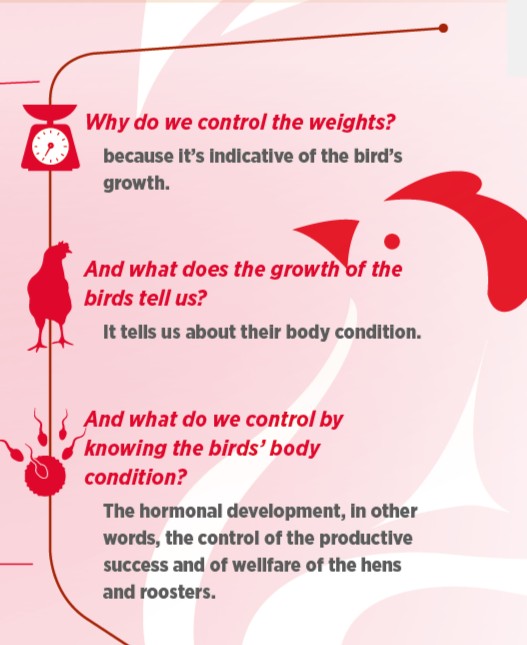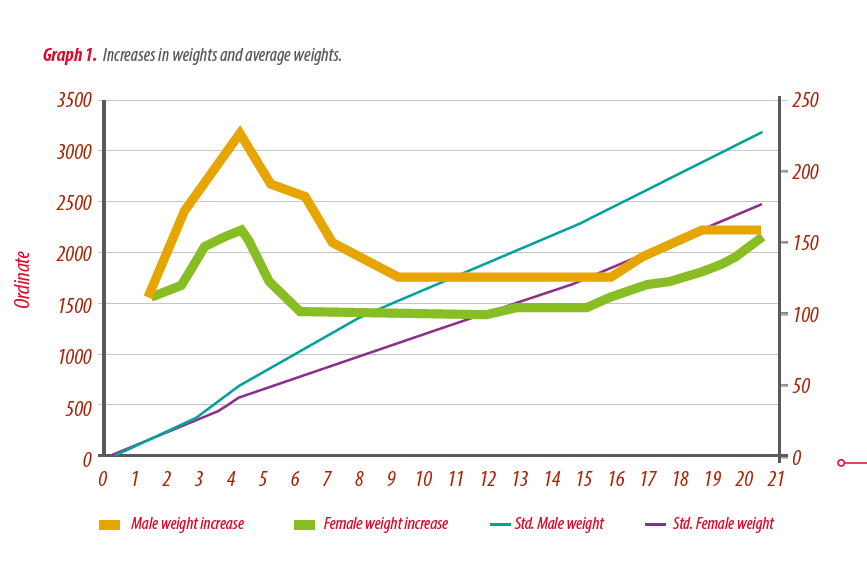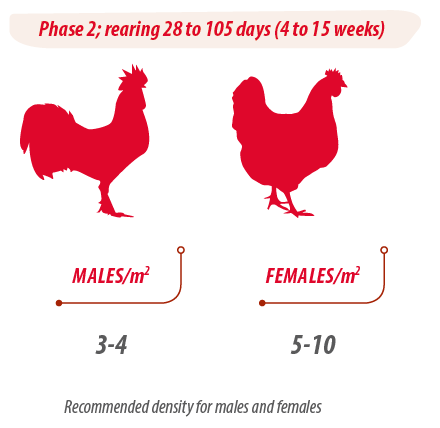
Reproduction and genetics
Two months, two weeks and two days, second phase of breeder rearing.
To read more content about 2019
Reproduction and genetics
To read more content about 2019
Content available at:
Español (Spanish)
The main objective during this rearing period is to achieve control over body weights with minimum coefficients of variation (% CV), with uniform growths and in accordance with the established target weights. The bird continues to grow and develop their immune and cardiovascular systems, skeleton, and plumage. 90% of skeletal growth is complete by 80-95 days of age.

The second stage of rearing is known for having the slowest body weight increases, because in this phase, it’s critical to ensure proper growth and development and have a correct body weight development curve, without fluctuations, than to achieve the target average weight at the end of rearing. The correct average weight at the end is not a guarantee of success. Success can only be achieved if the birds show a correct and uniform body condition.

The determining factors to guarantee the success of the rearing phase will be mainly on:
FACILITIES AND EQUIPMENT
Recommendations regarding densities and spacing between feeders and drinkers must always be respected during the entire lifecycle of the birds. Everything that is within this standard will have a direct positive impact on the productive results of the flock.
POPULATION DENSITY
As a guideline and as a basis, we could establish the following population densities:
